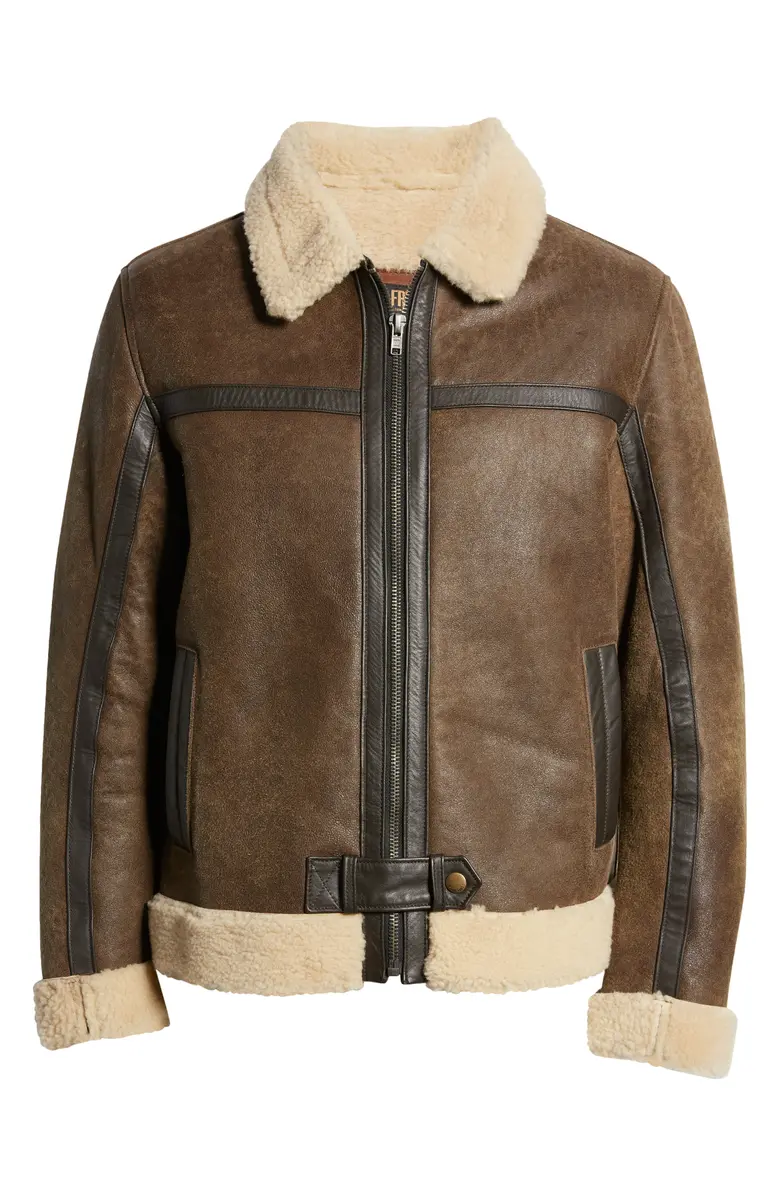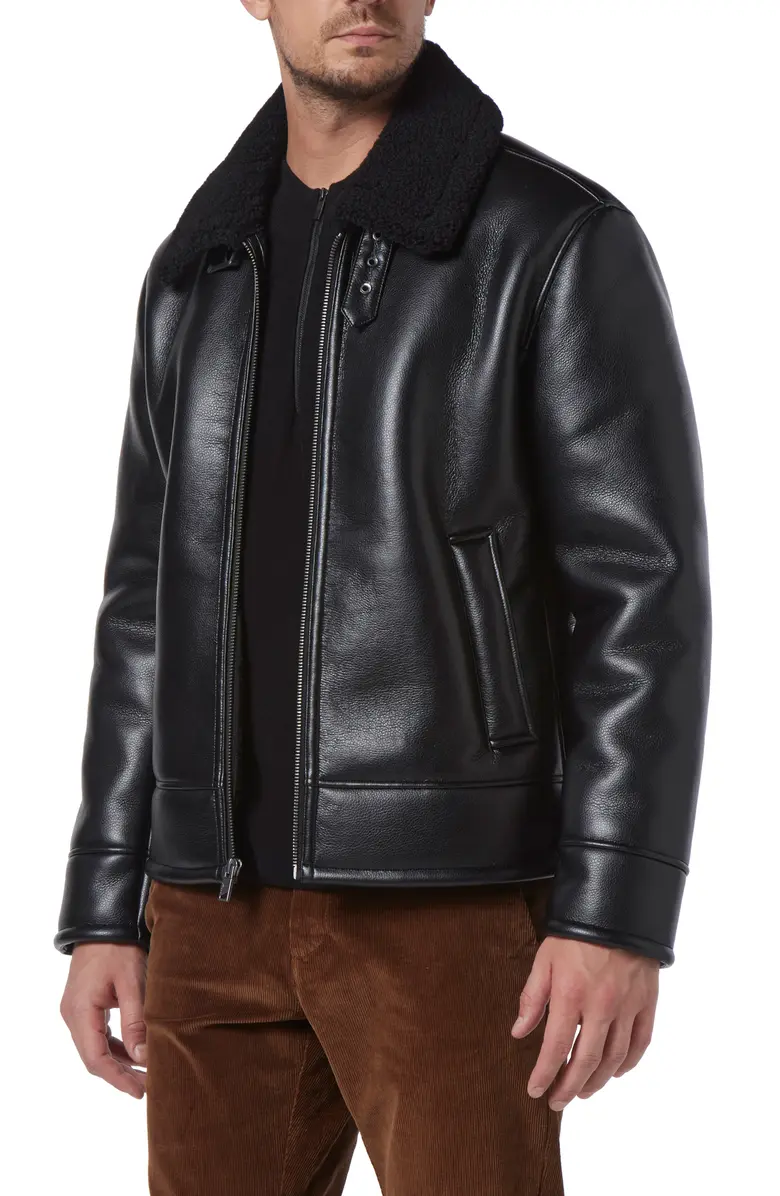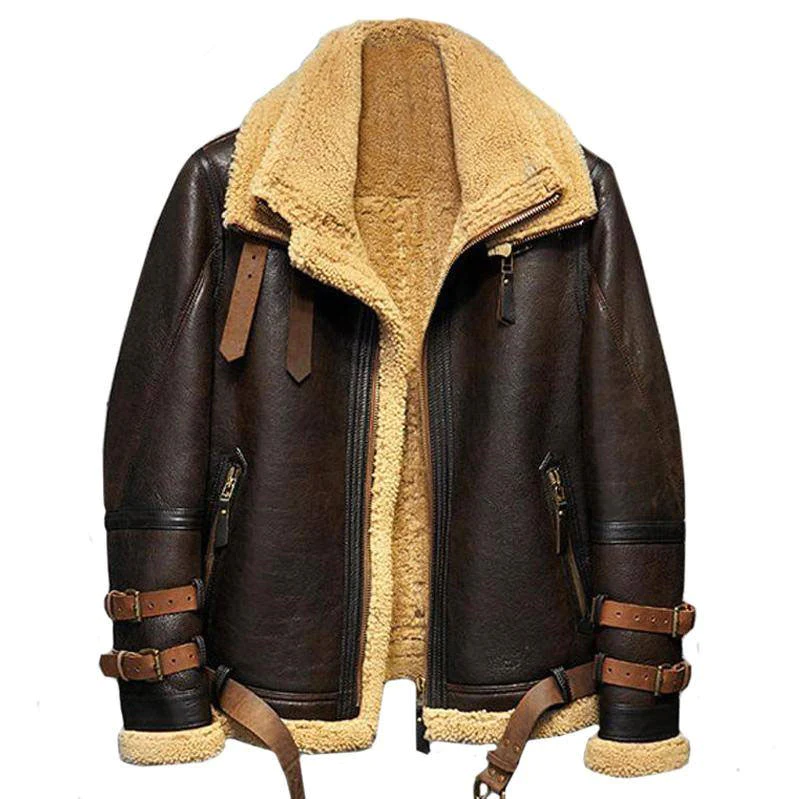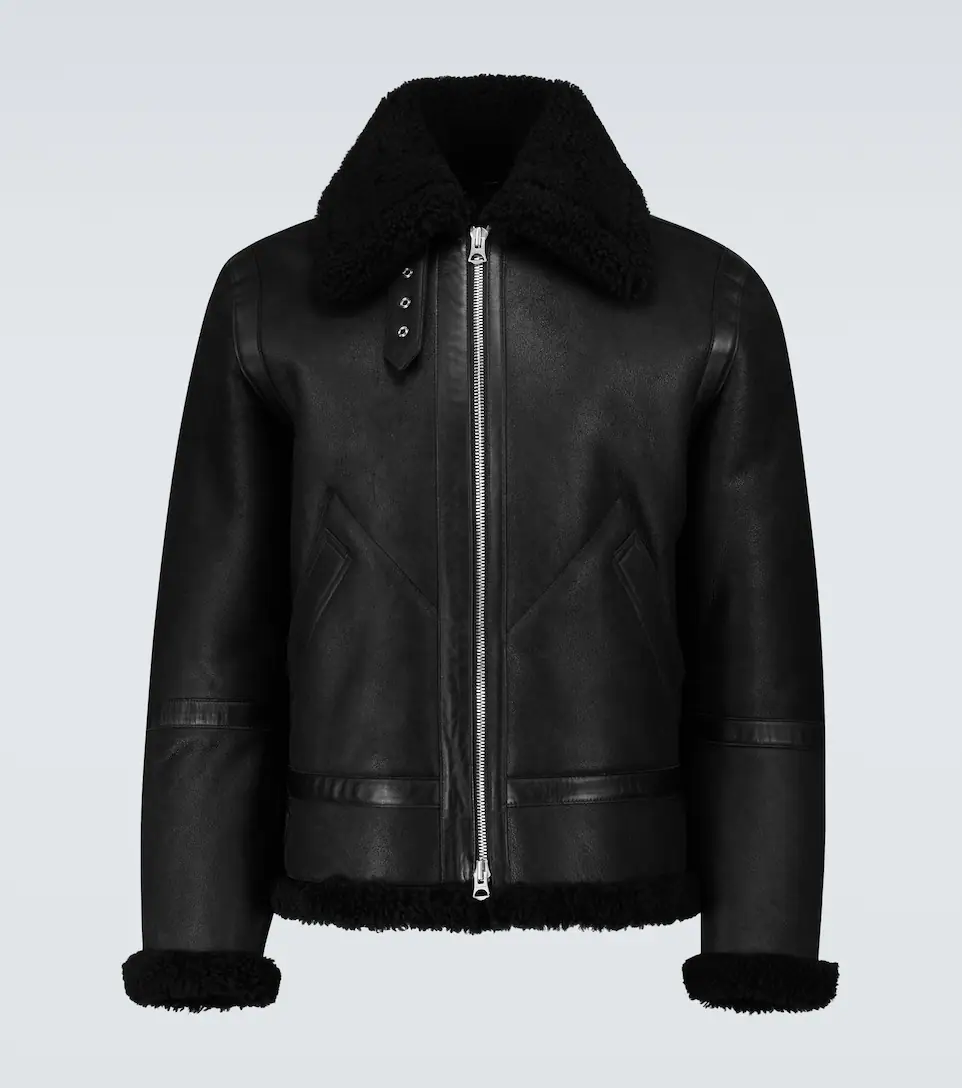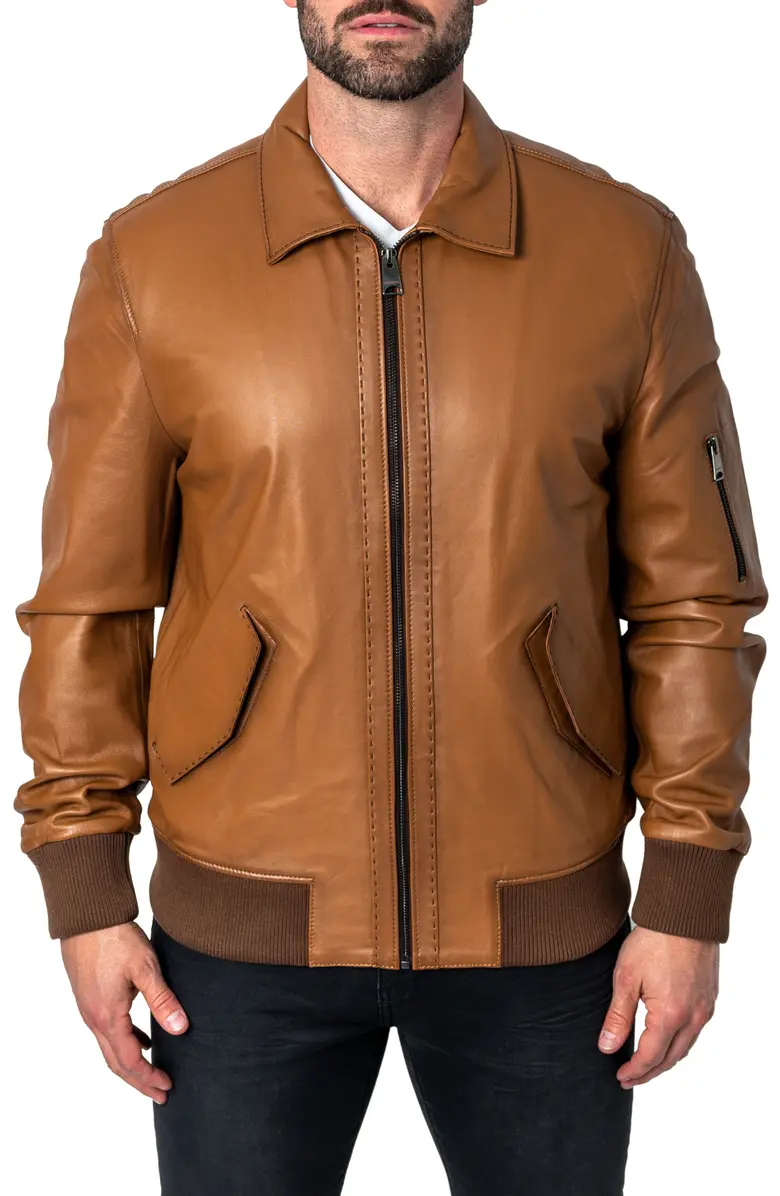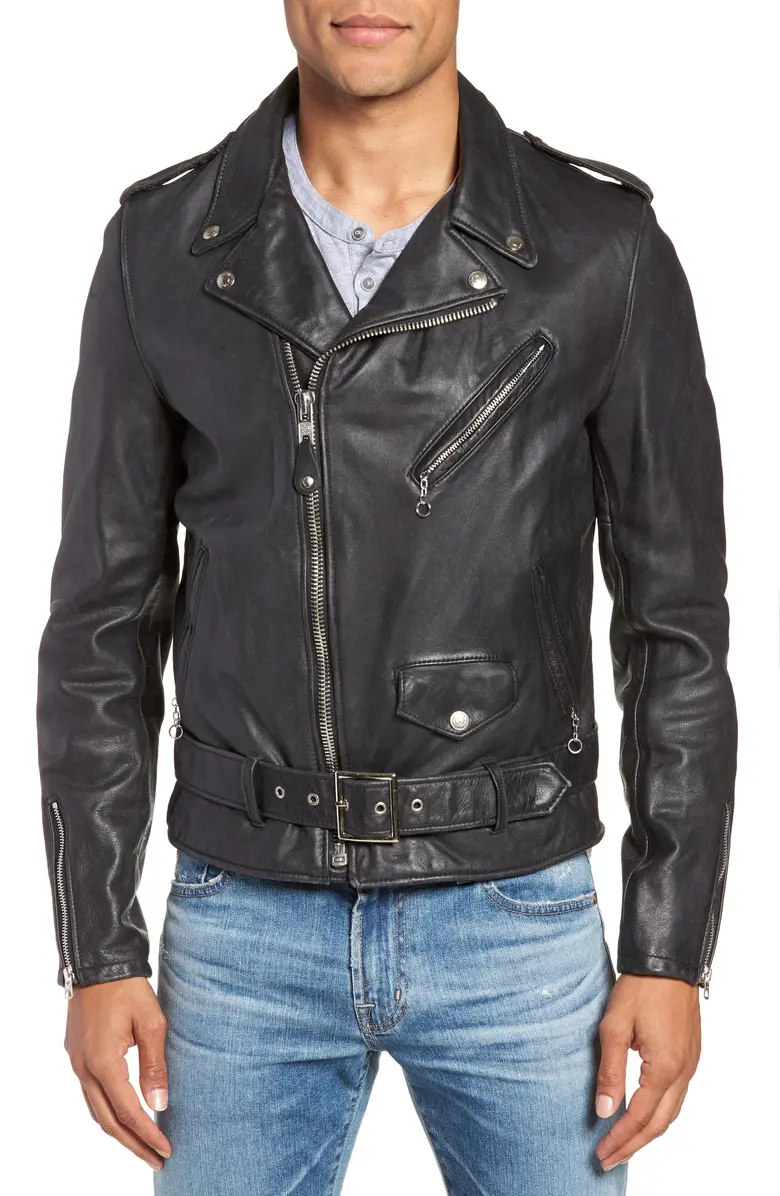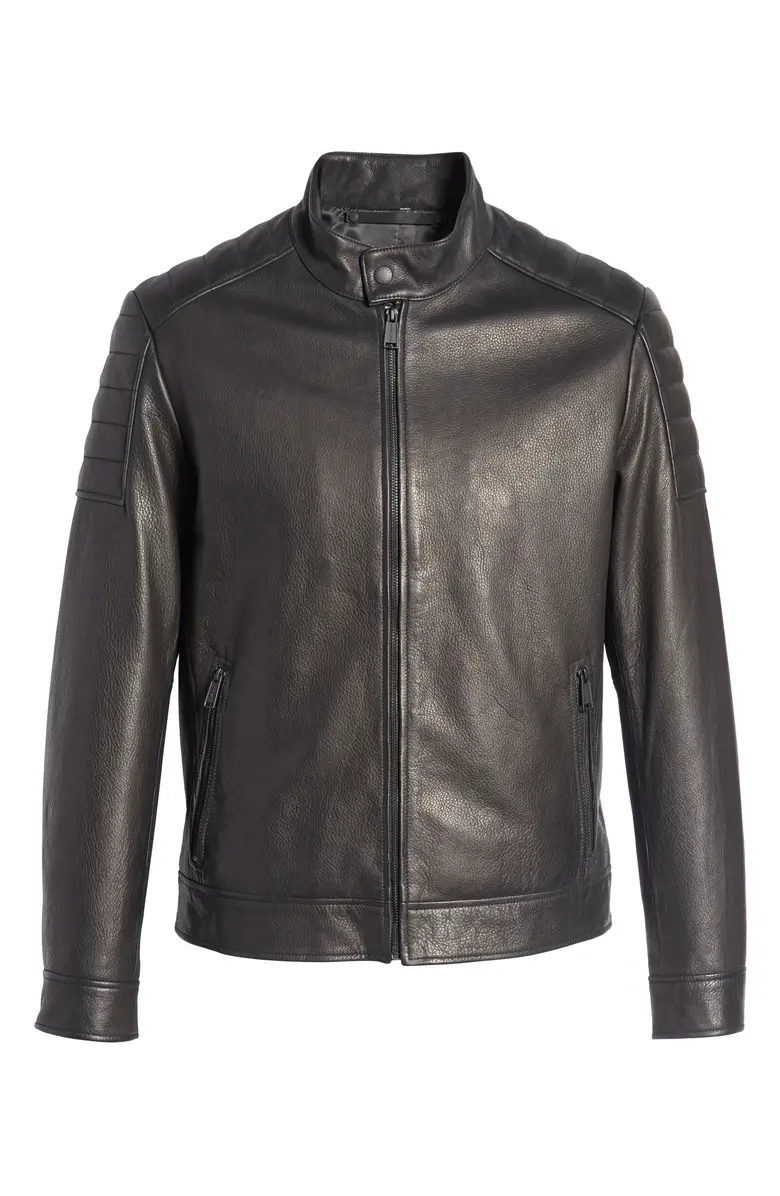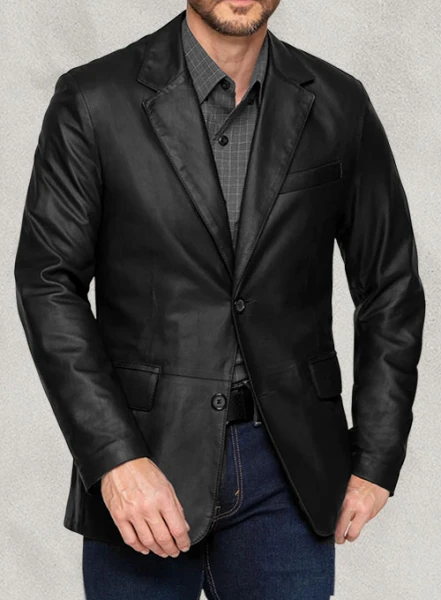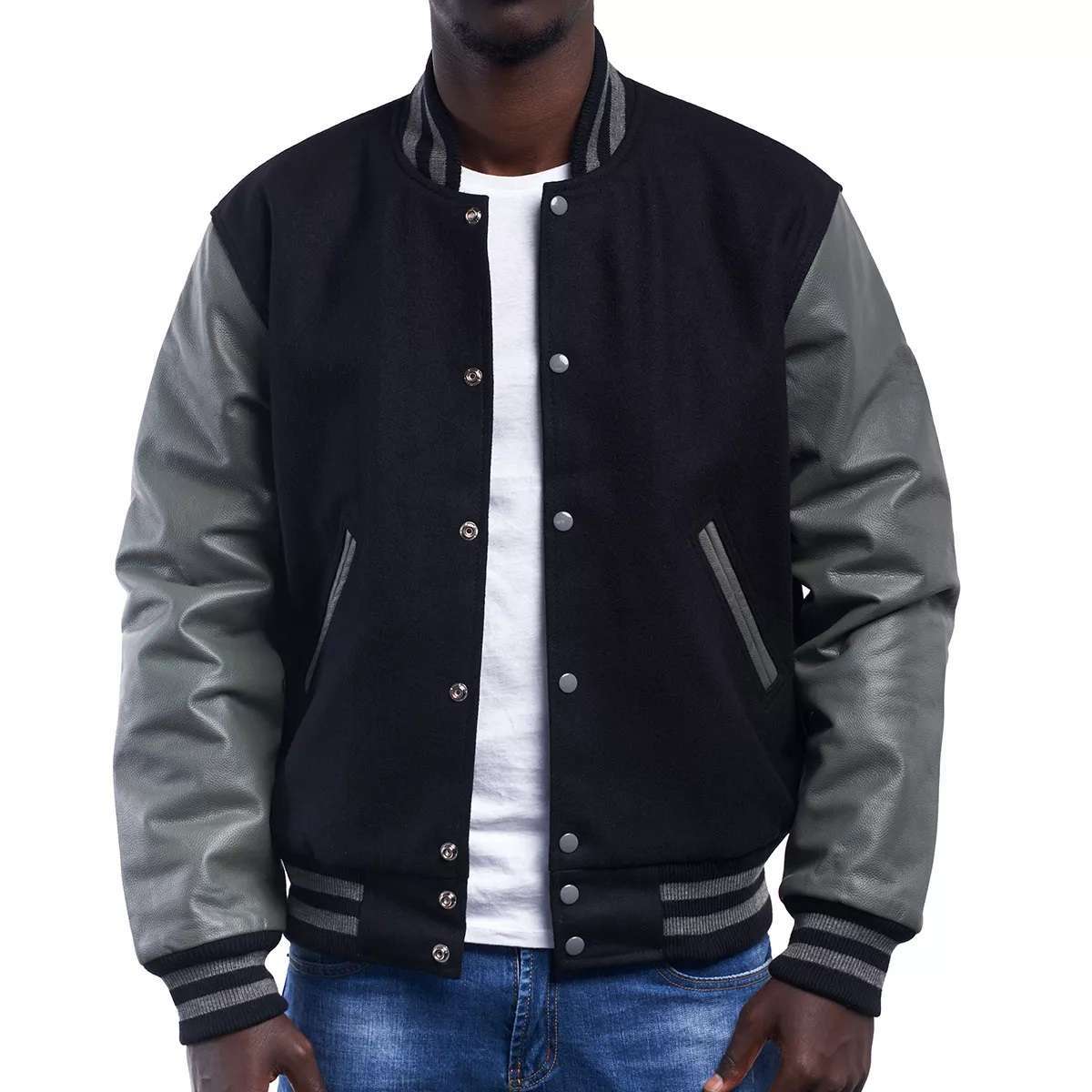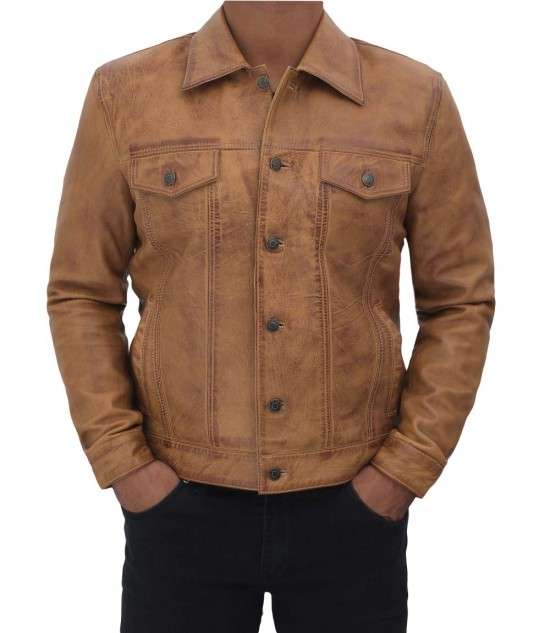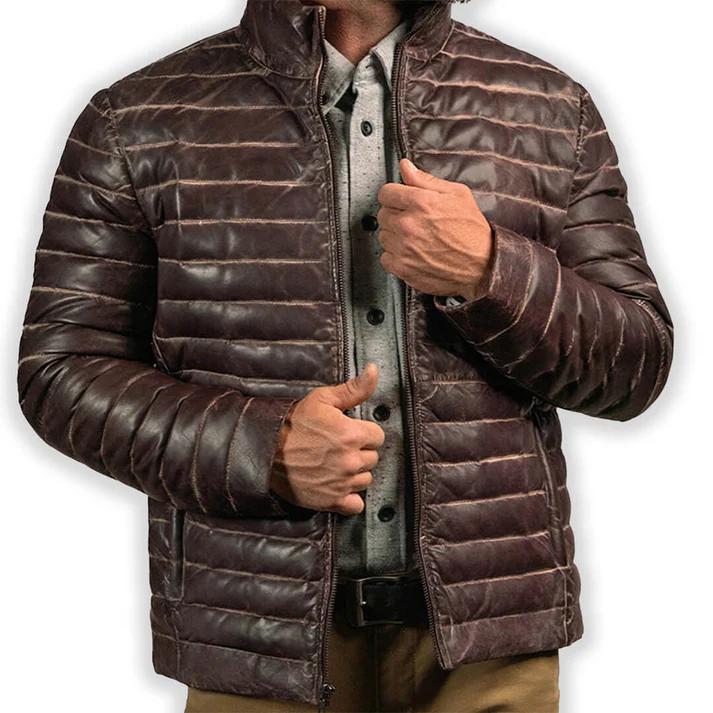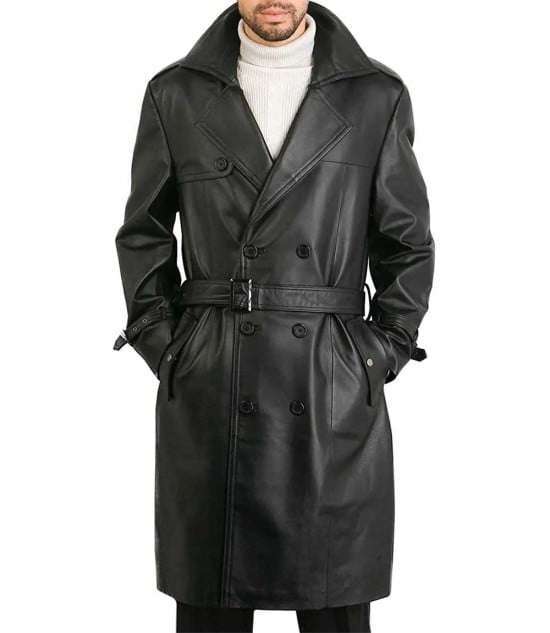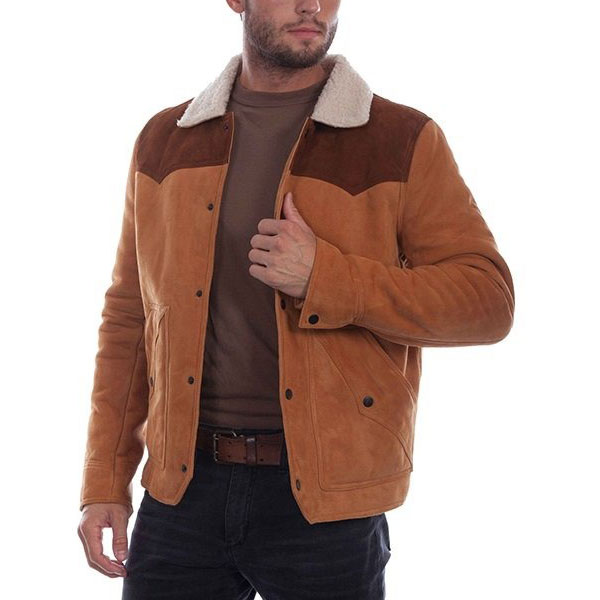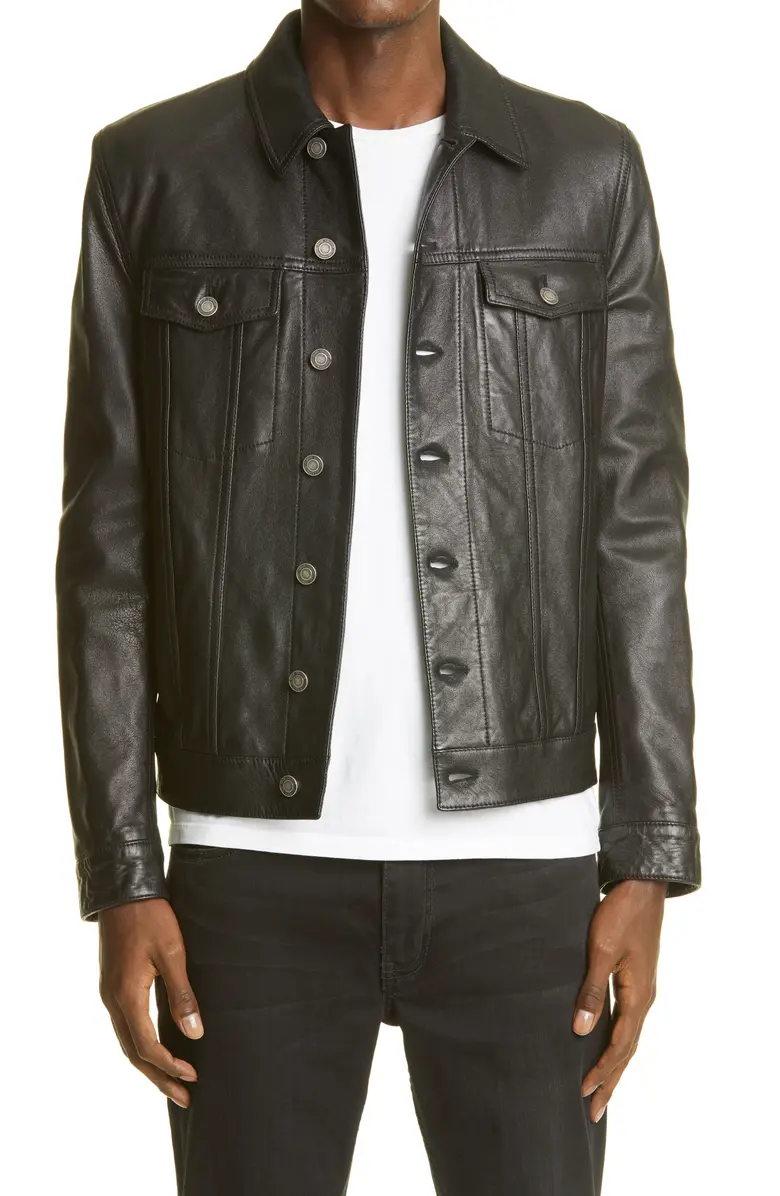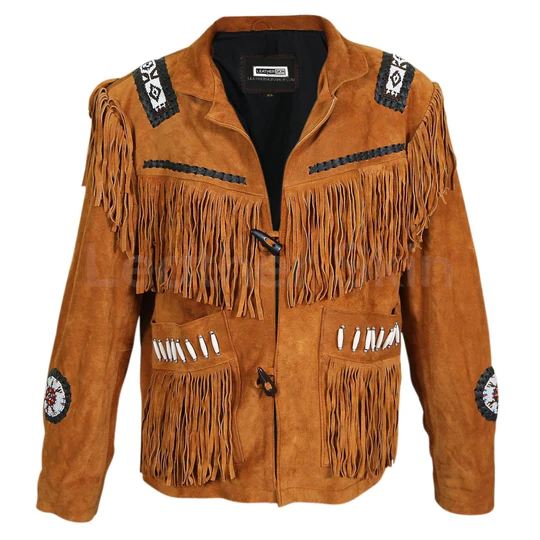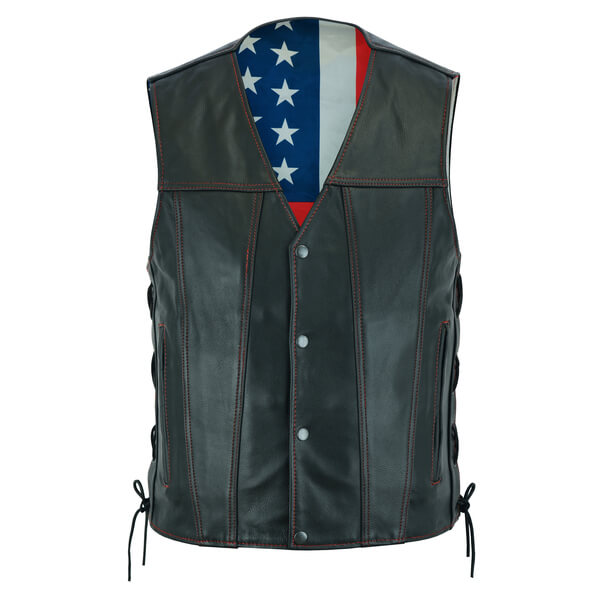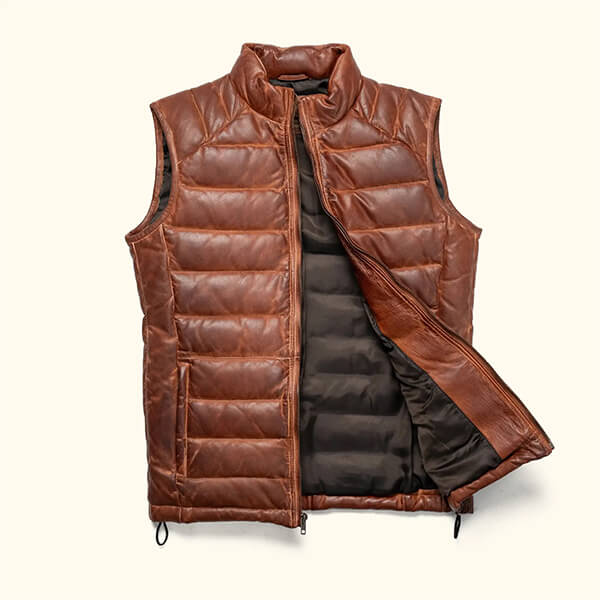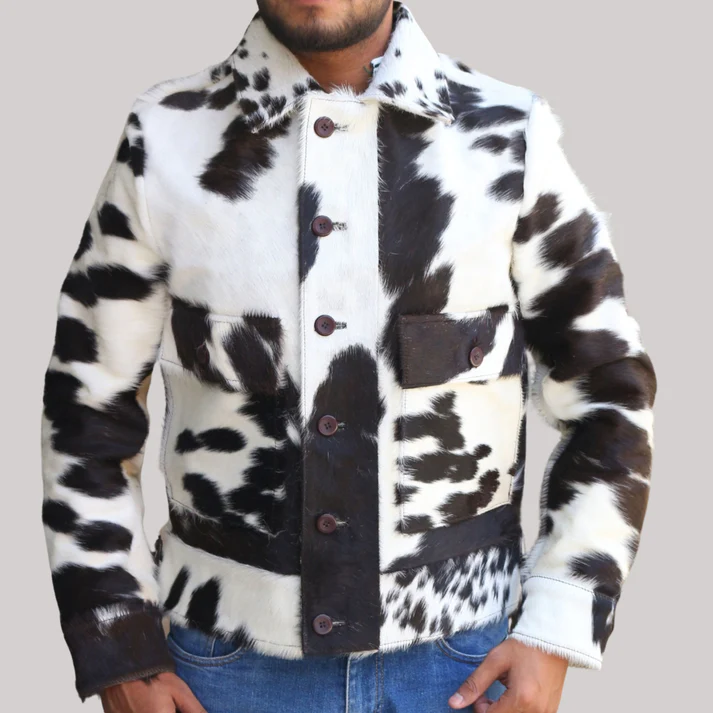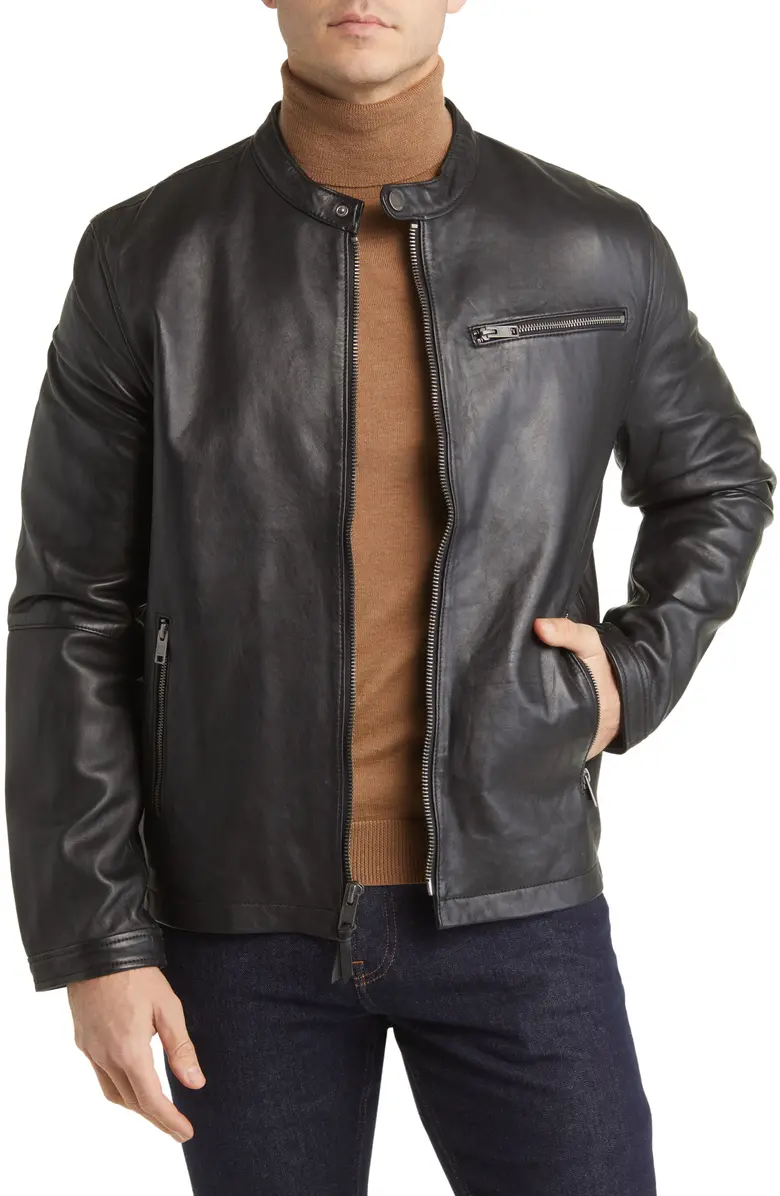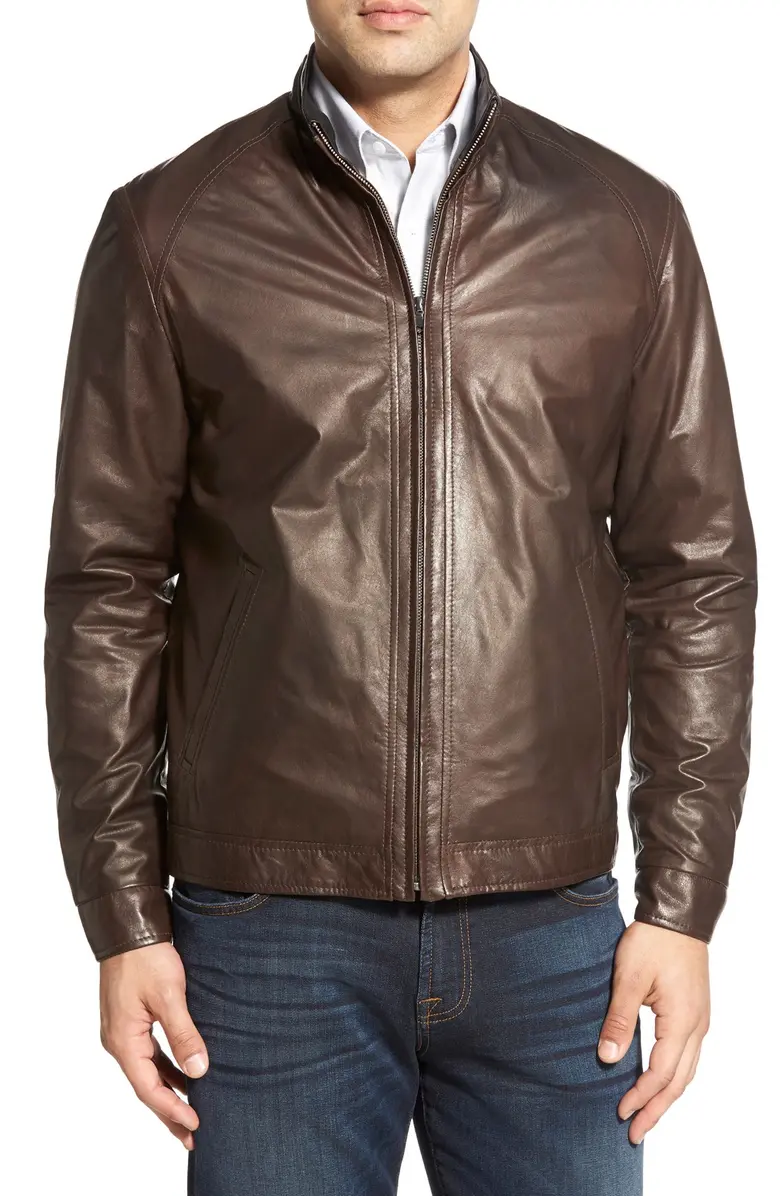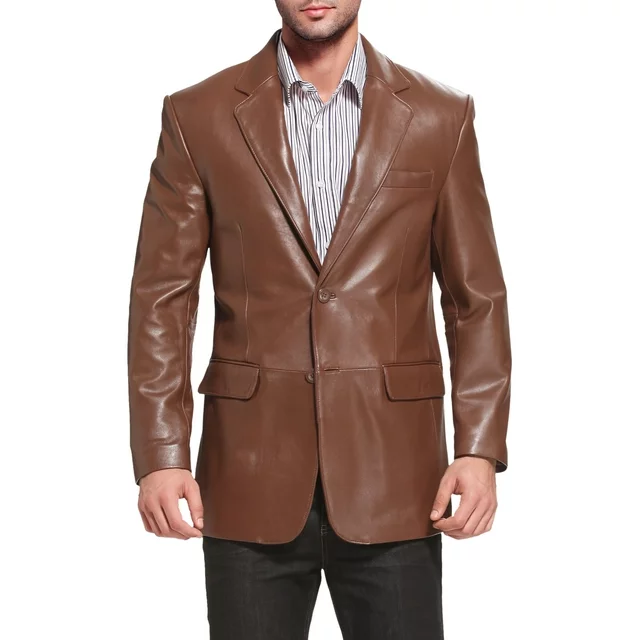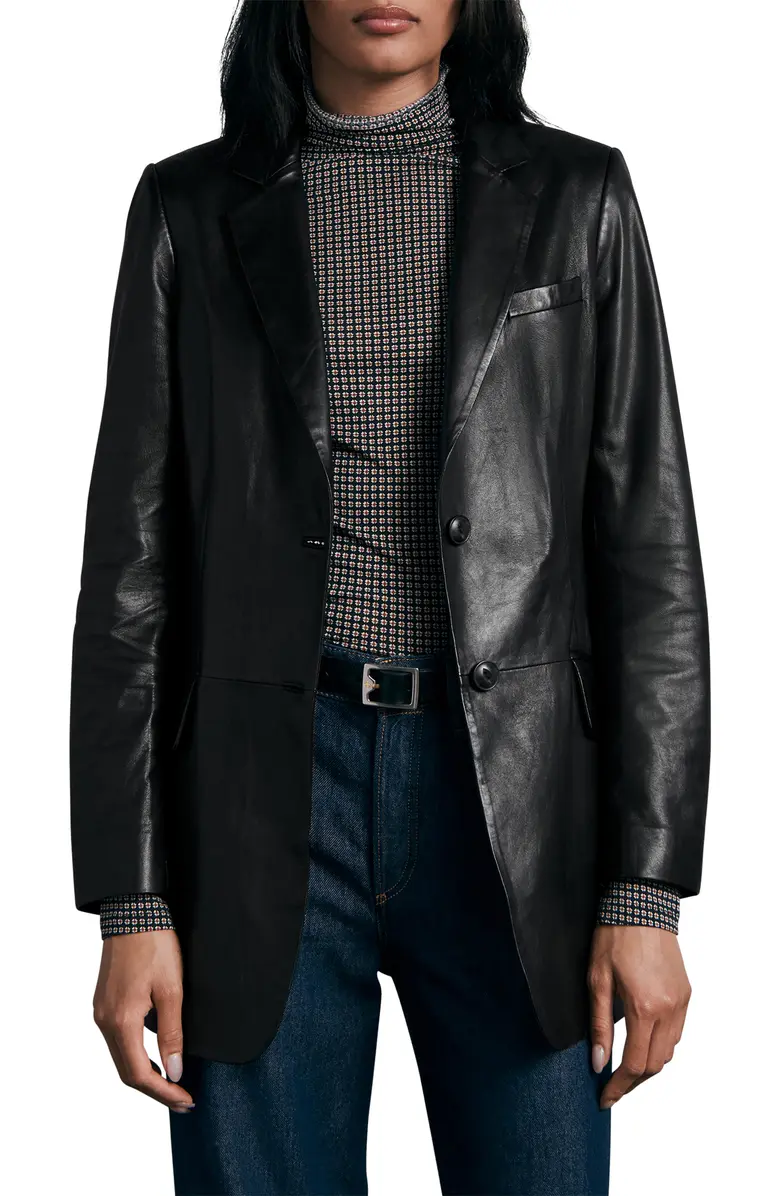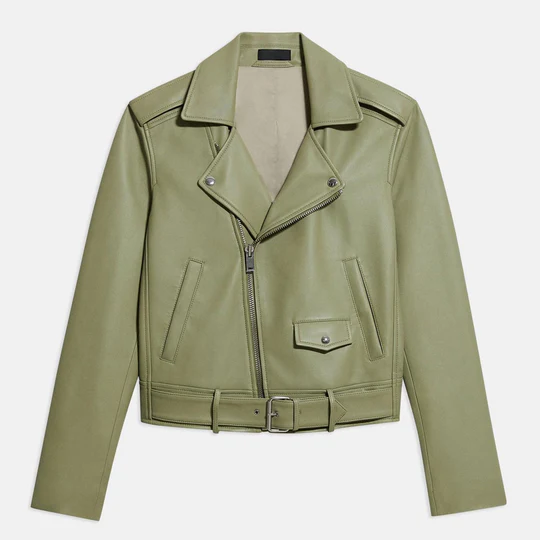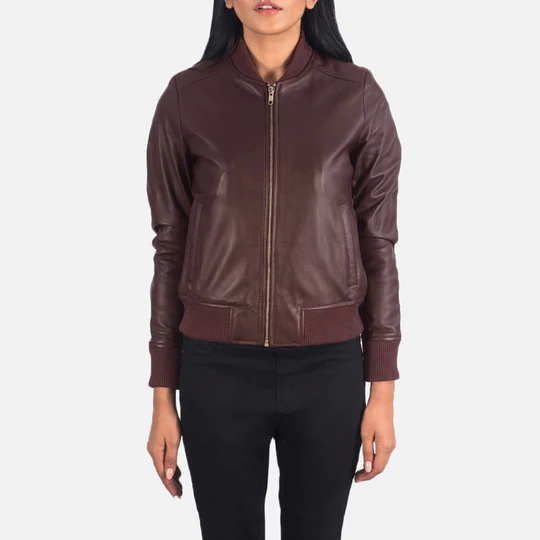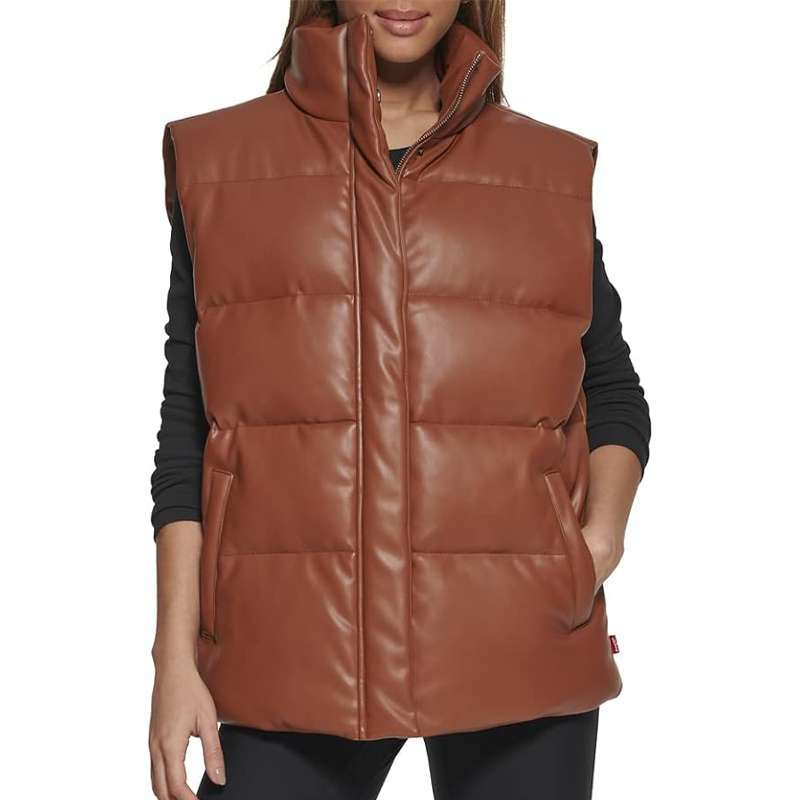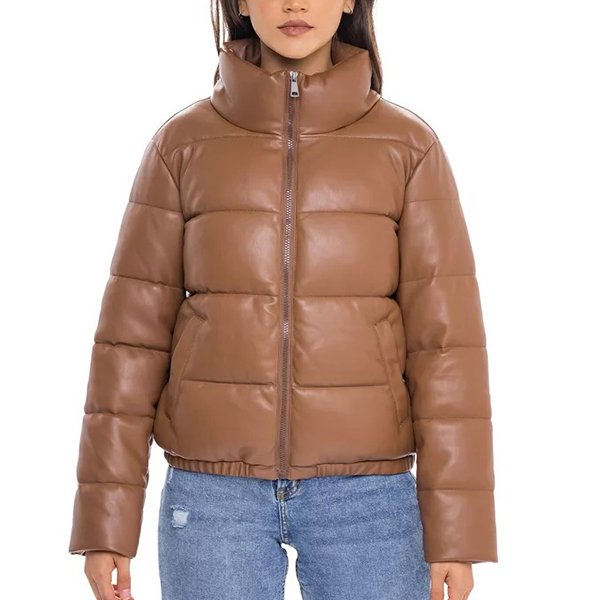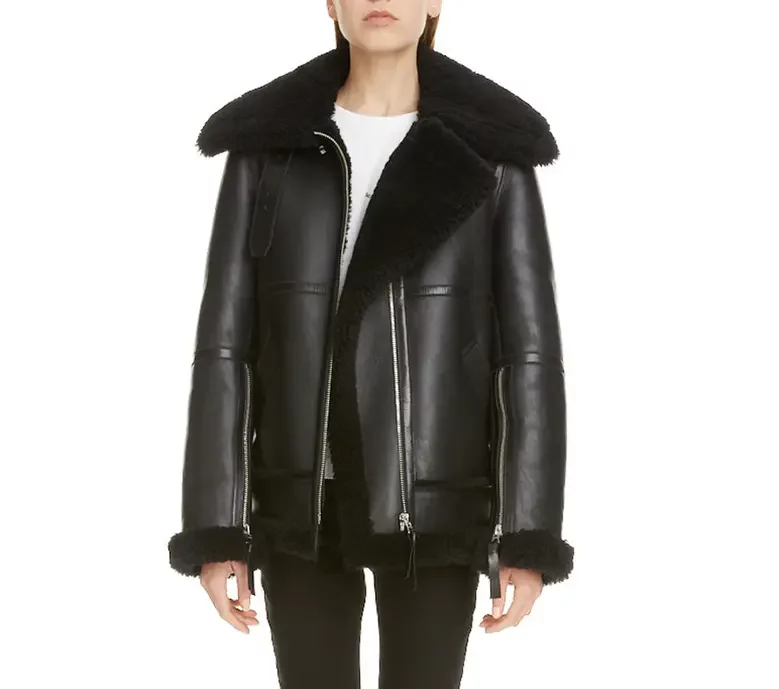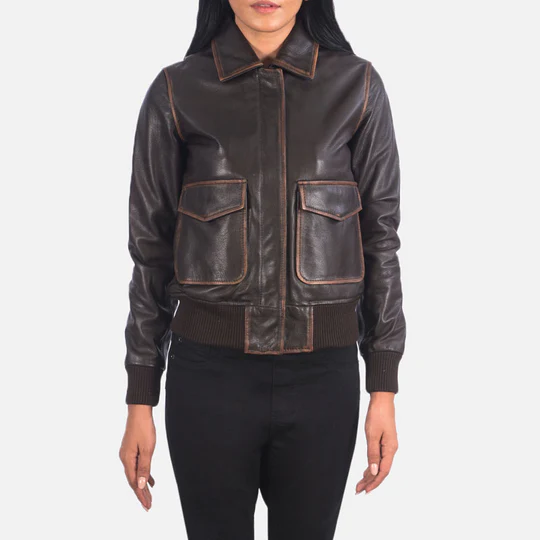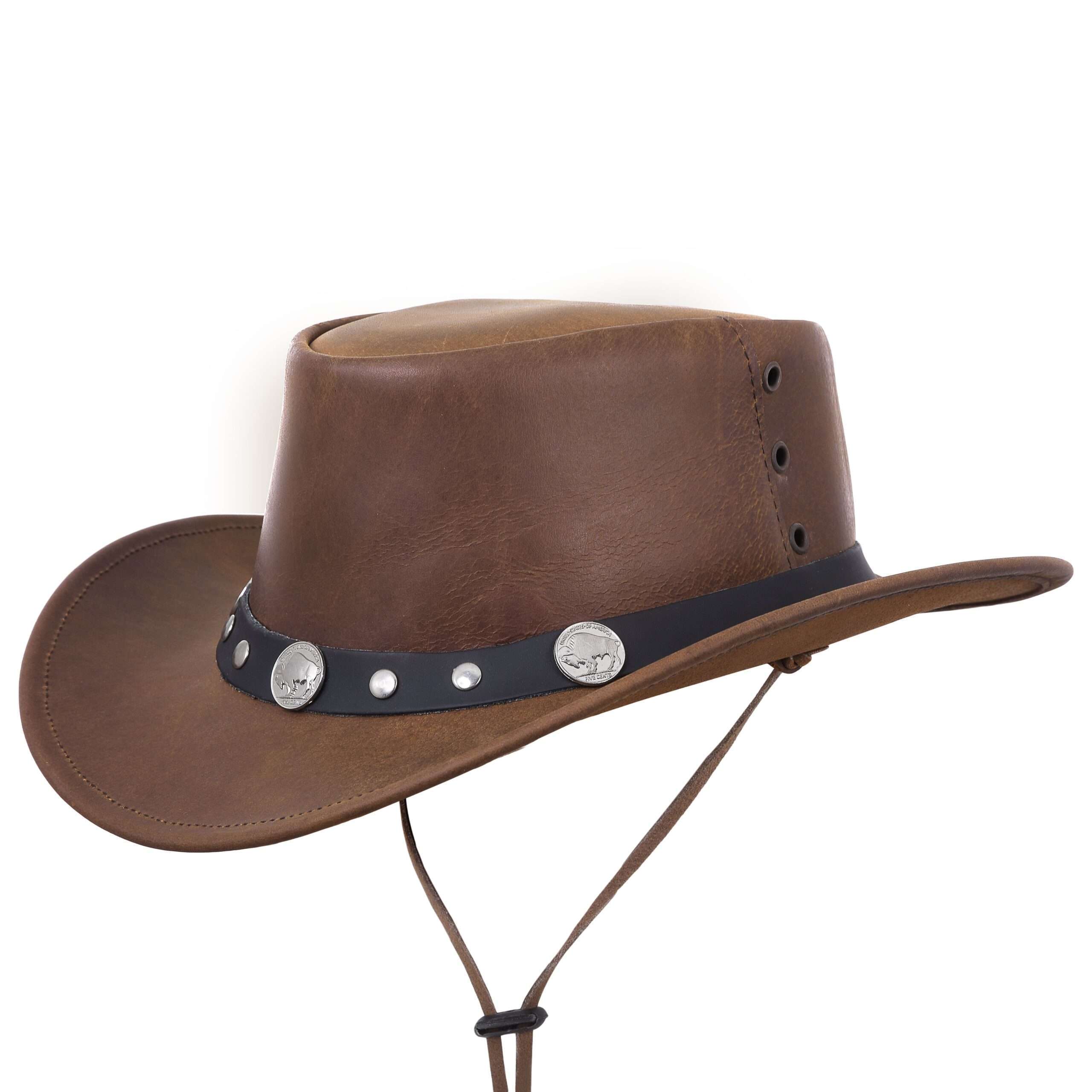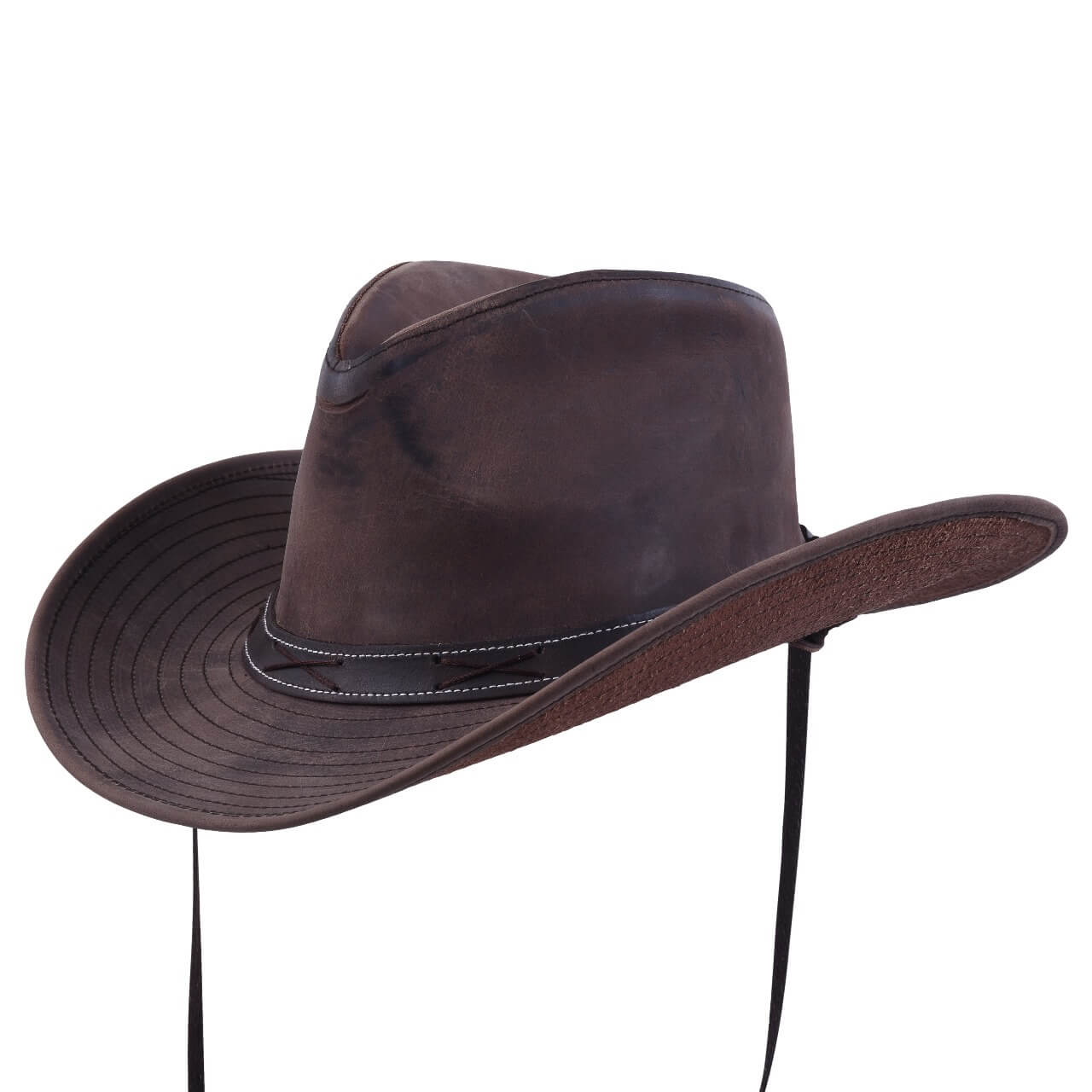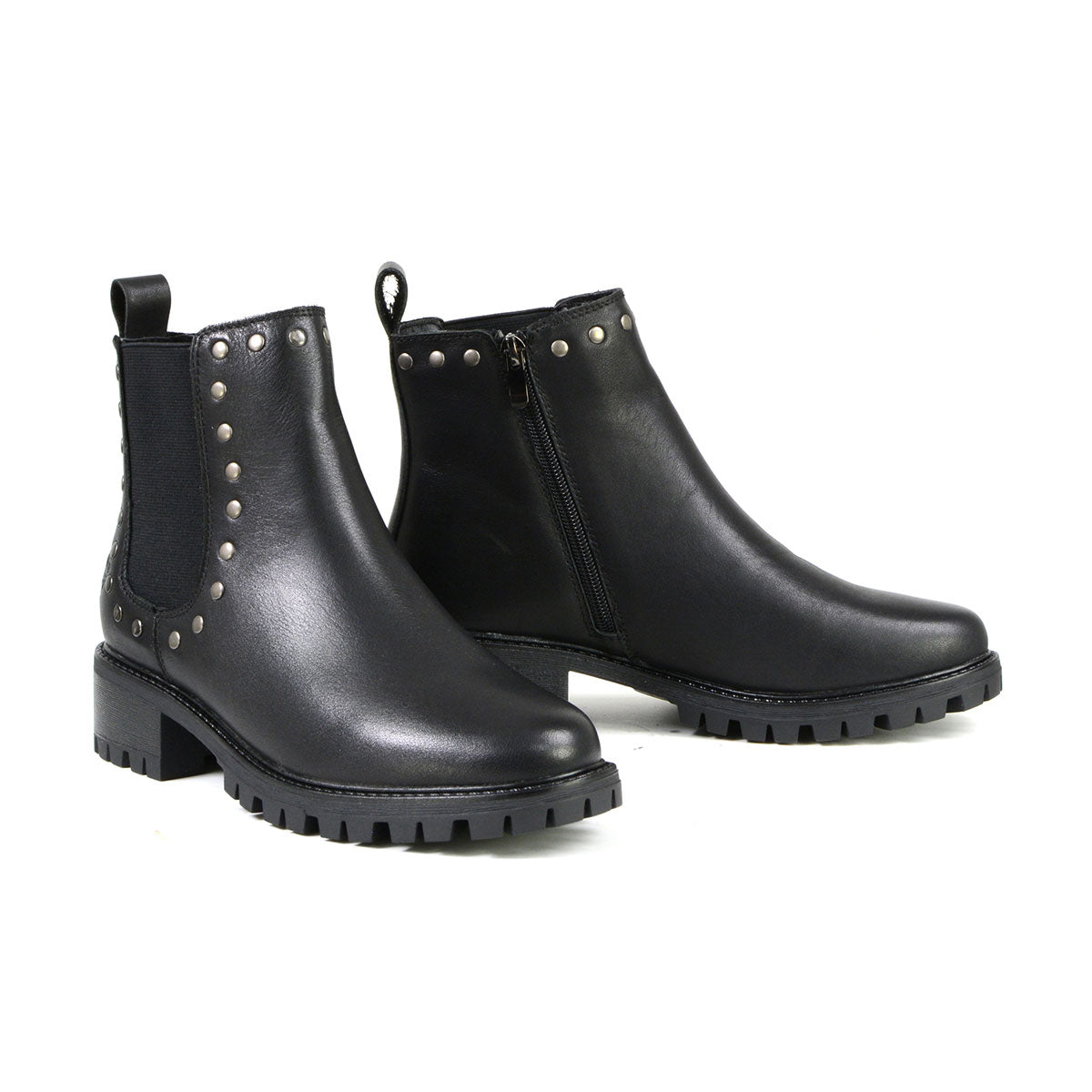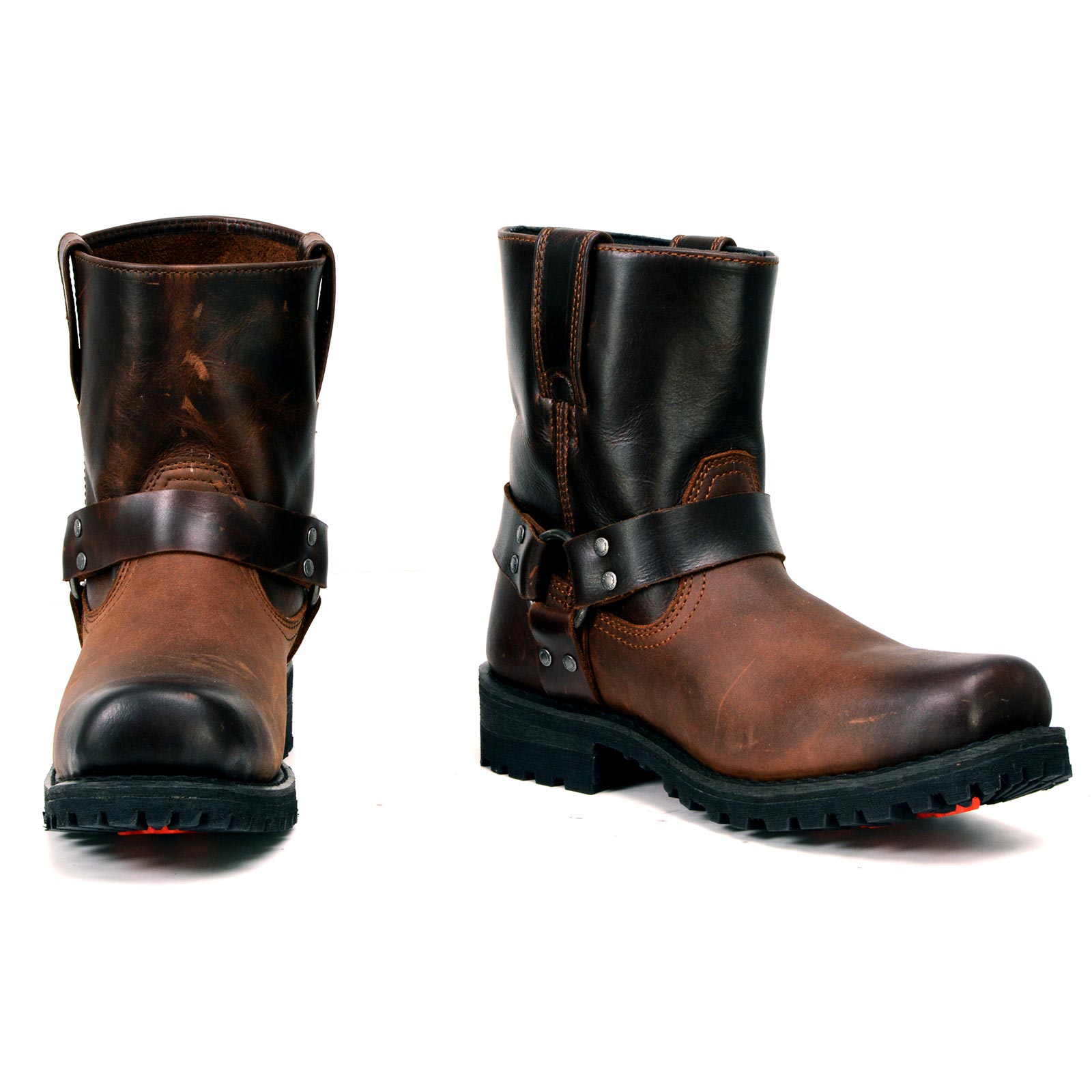When it comes to outdoor gear and apparel, one of the most important decisions you’ll make is what type of insulation to choose. Two popular options are sherpa and sheepskin. While both offer warmth and comfort, there are significant differences between the two that can impact your outdoor experience. In this article, we’ll explore the definition of sherpa and sheepskin and why the difference matters.
Definition of Sherpa and Sheepskin
Sherpa is a synthetic material made of polyester. It’s designed to mimic the look and feel of sheep’s wool but is more affordable and easier to care for. Sherpa is often used in outdoor clothing, particularly as a lining for jackets, vests, and hoodies. It’s also used in blankets, throws, and other home decor items.
Sheepskin, on the other hand, is a natural material made from the hide of sheep. It’s soft, warm, and breathable, making it an excellent choice for outdoor gear. Sheepskin is often used in boots, gloves, hats, and other winter accessories.
In this article, we’ll explore the differences between sherpa and sheepskin in more detail.
Sherpa: Origins, Characteristics, and Common Uses
Sherpa is a type of fabric that is known for its warmth and softness. It is often used in clothing and accessories for cold weather, such as jackets, hats, and boots. In this article, we’ll explore the origins and history of Sherpa fabric, its characteristics, and some common uses.
Origins and History of Sherpa Fabric
Sherpa fabric gets its name from the Sherpa people, who are an ethnic group from the Himalayan region of Nepal. The Sherpas have a long history of living and working in the mountains, and they are known for their expertise in guiding climbers and hikers through the rugged terrain.
In the early 20th century, Sherpas began working as guides and porters for Western climbers who were attempting to summit Mount Everest. As part of their work, they would wear thick, warm clothing made from wool and fur to protect themselves from the cold.
Over time, Western climbers began to appreciate the warmth and softness of the Sherpa clothing and started to bring it back to their own countries. Eventually, the fabric itself became known as Sherpa, and it started to be produced in other parts of the world.
Characteristics of Sherpa
Sherpa fabric is typically made from a combination of polyester and acrylic fibers. It is designed to mimic the look and feel of wool, but it is much more affordable and easier to care for.
One of the key characteristics of Sherpa fabric is its softness. It has a fluffy, almost furry texture that feels cozy and warm against the skin. It is also highly insulating, making it a popular choice for cold-weather clothing.
Sherpa fabric is also lightweight and breathable, which makes it comfortable to wear for extended periods of time. However, it is not as durable as some other materials, and it can start to pill or mat over time if it is not cared for properly.
Common Uses for Sherpa Fabric
Sherpa fabric is commonly used in a variety of clothing and accessories for cold weather. Some common examples include:
- Jackets and coats: Sherpa-lined jackets and coats are popular for their warmth and softness.
- Hats and headbands: Sherpa is often used as a lining or trim for hats and headbands to keep the head and ears warm.
- Boots and slippers: Sherpa-lined boots and slippers are popular for their warmth and comfort.
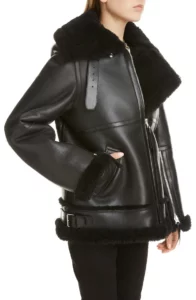
Black Aviator B-3 Sherpa Leather Jacket Women’s
Sherpa fabric is also sometimes used for home decor items, such as throw blankets or pillows.
Pros of Sherpa
Sherpa offers several benefits that make it a popular choice for clothing, accessories, and home decor. Here are some of the pros of Sherpa:
- Warmth and insulation: Sherpa is known for its exceptional warmth and insulation properties. This is because of its thick pile which helps trap heat close to the body, making it ideal for cold weather.
- Softness and comfort: Sherpa fabric is also highly prized for its softness and comfort. It feels plush and cozy against the skin, providing a luxurious experience that many people love.
- Lightweight and easy to care for: Despite its warm and plush feel, Sherpa is surprisingly lightweight which makes it easy to wear and care for. It’s also machine-washable, so it can be cleaned and maintained easily.
Cons of Sherpa
While Sherpa fabric offers many benefits, there are also some potential drawbacks to consider. Here are a few cons of Sherpa:
- Durability and longevity: Sherpa fabric is not known for being particularly durable or long-lasting. Over time, it may begin to show signs of wear and tear, especially with frequent use or washing.
- Pilling and shedding: Another issue with Sherpa fabric is that it has a tendency to pill and shed. This can make the fabric look worn and ragged and may also create a mess in your home.
- Environmental concerns: Finally, some people may have concerns about the environmental impact of Sherpa fabric. While there are now more sustainable options available, some Sherpa fabrics are still made using synthetic materials that may not be biodegradable or eco-friendly.
Sherpa vs. Sheepskin: Differences in Material
When it comes to choosing a warm and cozy material for winter clothes, jackets, or home decor, two popular options are sherpa and sheepskin. Both materials are soft, durable, and provide excellent insulation against the cold. However, there are significant differences between these materials in terms of their fibers, texture, production process, chemical treatments, and color. In this article, we will explore these differences and help you decide which material is best for your needs.
Differences in Fibers and Texture
One of the main differences between sherpa and sheepskin is the fibers and texture of the materials. Sherpa is made from synthetic fibers that are brushed to create a fluffy and soft texture that resembles wool. Sherpa is lightweight and easy to care for, making it a popular choice for winter clothing and home decor.
In contrast, sheepskin is made from the skin of sheep and has a natural texture and color. Sheepskin is soft and durable, providing excellent insulation against the cold. The natural fibers of sheepskin make it more breathable than synthetic materials, making it a popular choice for winter boots and gloves.
Differences in Production Process
Sherpa and sheepskin also differ in their production process. Sherpa is made from synthetic fibers that are manufactured in a factory. The fibers are then brushed to create the fluffy and soft texture that resembles wool. Sherpa is a relatively inexpensive material to produce, making it a popular choice for clothing and home decor.
Sheepskin, on the other hand, is produced from the skin of sheep through a more complex process. First, the wool is removed from the skin then it undergoes a tanning process to prevent it from decomposing and to make it soft and durable. The tanning process can be done using natural or synthetic chemicals depending on the desired finish. Once the tanning process is complete, the sheepskin is then cut and shaped into various items such as boots, gloves, and jackets.
The production process of sheepskin is more time-consuming and labor-intensive than that of sherpa. This makes sheepskin products more expensive compared to sherpa products.
Differences in Chemical Treatments and Finishes
Another difference between sherpa and sheepskin is the chemical treatments and finishes used on the materials. Sherpa is typically made from synthetic fibers that do not require chemical treatment or finishing. However, some manufacturers may add chemical treatments to enhance the texture or color of the material.
In contrast, sheepskin undergoes a tanning process that involves the use of chemicals to make the skin soft and durable. Depending on the desired finish different chemicals may be used in the tanning process. For example, chrome tanning uses chromium salts to produce a soft and flexible finish, while vegetable tanning uses plant extracts to create a firmer and more natural-looking finish.
The chemicals used in the tanning process can have a significant impact on the environment. For this reason, many manufacturers are now using eco-friendly tanning methods that use natural or low-impact chemicals.
Differences in Colors and Patterns
Sherpa and sheepskin also differ in their color and pattern options. Sherpa is available in a wide range of colors and patterns, including solid colors, stripes, and prints. This variety makes it a popular choice for winter clothing and home decor.
Sheepskin, on the other hand, is available in a more limited range of colors, including natural shades of white, brown, and black. The natural color of sheepskin is highly valued for its warmth and texture, and many people prefer it over dyed sheepskin.
Which Material is Best for You?
Choosing between sherpa and sheepskin depends on your needs and preferences. If you are looking for a warm and cozy material for winter clothing or home decor, sherpa is a great option. It is lightweight, easy to care for, and available in a wide range of colors and patterns.
However, if you are looking for a durable and natural material for winter boots, gloves, or jackets, sheepskin is the better choice. It provides excellent insulation against the cold, and the natural fibers make it more breathable than synthetic materials. Additionally, sheepskin has a timeless and classic look that never goes out of style.
Comparing Warmth and Insulation
When it comes to keeping warm during the cold winter months, both sherpa and sheepskin offer excellent insulation properties. However, they differ in their insulating abilities due to their fibers and texture.
Sherpa Insulation
Sherpa is made from synthetic fibers that are designed to mimic the look and feel of wool. While it is not as warm as natural wool, it still provides excellent insulation against the cold. Sherpa is lightweight and breathable, making it a great choice for winter clothing and home decor.
Sheepskin Insulation
Sheepskin is a natural material that offers superior insulation compared to synthetic materials like sherpa. The fibers in sheepskin are hollow, which helps to trap air and create a natural barrier against the cold. Additionally, sheepskin is more breathable than synthetic materials, which helps to regulate body temperature and prevent overheating.
Best Uses for Each Material Based on Warmth and Insulation
Sherpa and sheepskin are both great options for keeping warm during the winter months. However, they are better suited for different uses based on their insulation properties.
Sherpa is best suited for lightweight winter clothing, such as jackets, vests, and hats. It provides excellent insulation without adding bulk or weight to the garment. Sherpa is also a great choice for home decor, such as blankets and pillows, as it adds warmth and coziness to any space.
Sheepskin is better suited for heavier winter clothing, such as boots, gloves, and jackets. It provides superior insulation and durability compared to synthetic materials. Additionally, sheepskin has a natural water-resistant property that makes it ideal for use in snowy or wet conditions.
Comparing Comfort and Softness
When it comes to comfort and softness both sherpa and sheepskin are known for their luxurious textures. However, they differ in their fibers and production processes, which affects their overall feel.
Sherpa Comfort
Sherpa is a synthetic material that is designed to mimic the look and feel of wool. It has a soft and fluffy texture that feels great against the skin. Sherpa is lightweight and breathable, making it a comfortable choice for both clothing and home decor.
Sheepskin Comfort
Sheepskin is a natural material that offers unparalleled comfort and softness. The fibers in sheepskin are soft and supple, which makes it a popular choice for high-end fashion and home decor. Additionally, sheepskin has a natural temperature-regulating property that makes it comfortable to wear in any climate.
Best Uses for Each Material Based on Comfort and Softness
Sherpa and sheepskin both offer exceptional comfort and softness. However, they are better suited for different uses based on their texture and feel.
Sherpa is best suited for lightweight clothing, such as jackets, vests, and hats. It is also a great choice for home decor, such as blankets and pillows, as it adds a cozy and comfortable touch to any space.
Sheepskin is better suited for high-end fashion and home decor, such as boots, gloves, and rugs. It adds a luxurious and soft texture to any product and is highly sought after for its comfort and style.
Comparing Durability and Longevity
When it comes to durability and longevity, both sherpa and sheepskin have their unique characteristics. It’s essential to understand their differences in fibers and production processes to determine which material is best suited for your needs.
Sherpa Durability
Sherpa is a synthetic material that is made from polyester fibers. It is lightweight and durable, making it an excellent choice for outdoor clothing and gear. Sherpa can withstand harsh weather conditions, such as rain and snow, without losing its shape or color.
Sheepskin Durability
Sheepskin is a natural material that is known for its durability and strength. It is resistant to water, fire, and wear and tear, making it a popular choice for high-end fashion and home decor. Sheepskin products can last for years if properly cared for and maintained.
Differences in Durability and Longevity
Sherpa and sheepskin differ in their durability and longevity due to their fibers and production processes. While sherpa is lightweight and durable, it may not last as long as sheepskin products. Sheepskin, on the other hand, is known for its strength and longevity, but it can be more expensive and require more maintenance.
Best Uses for Each Material Based on Durability and Longevity
Sherpa and sheepskin are both durable materials that are suitable for a variety of uses. However, their unique characteristics make them better suited for certain products.
Sherpa is best suited for outdoor clothing and gear such as jackets, hats, and backpacks. It can withstand harsh weather conditions and maintain its shape and color over time.
Sheepskin is better suited for high-end fashion and home decor such as boots, gloves, and rugs. It is a luxurious material that adds style and elegance to any product and can last for years with proper care.
Comparing Environmental Impact
As consumers become more conscious of their impact on the environment, it’s important to consider the environmental impact of the materials we use. Both sherpa and sheepskin have their unique characteristics when it comes to sustainability and eco-friendliness.
Sherpa Environmental Impact
Sherpa is a synthetic material made from polyester fibers which are derived from petroleum. The production of polyester can be harmful to the environment, as it requires a significant amount of energy and releases greenhouse gases.
However, sherpa has the advantage of being lightweight and long-lasting which can reduce its overall impact on the environment. Additionally, some companies are now using recycled polyester to make their sherpa products, which can reduce waste and minimize their carbon footprint.
Sheepskin Environmental Impact
Sheepskin is a natural material that is biodegradable and has a lower environmental impact than synthetic materials. However, the production of sheepskin can be resource-intensive, as it requires a significant amount of water and energy to process the hides.
Furthermore, there are concerns about the ethical treatment of animals in the sheepskin industry. Some companies use ethical and sustainable practices, such as sourcing hides from local farms and using environmentally friendly tanning processes, to minimize their impact on the environment.
Differences in Environmental Impact
The environmental impact of sherpa and sheepskin differs due to their fibers and production processes. While sherpa is a synthetic material that is derived from petroleum and can have a high carbon footprint, sheepskin is a natural material that is biodegradable but requires a significant amount of resources to produce.
Choosing Between Sherpa & Sheepskin: Factors to Consider.
When it comes to choosing between Sherpa and Sheepskin, there are several factors to consider. Here are some things to keep in mind when deciding which material is right for you:
- Warmth and Insulation: Both Sherpa and Sheepskin provide warmth and insulation, but Sherpa is generally lighter and less bulky, while Sheepskin is thicker and denser. If you live in a cold climate and need maximum warmth, Sheepskin may be the better choice. However, if you prefer a lighter material or plan to use it for layering, Sherpa may be the way to go.
- Comfort and Softness: Sherpa is known for its softness and fluffy texture, while Sheepskin has a more luxurious feel. Consider your preferences when it comes to comfort and texture and choose the material that feels best against your skin.
- Durability and Longevity: Sheepskin is a highly durable material that can last for years with proper care, while Sherpa may be more prone to wear and tear over time. If you’re looking for a long-lasting material, Sheepskin is likely the better choice.
- Environmental Impact: If sustainability and eco-friendliness are a priority for you, Sherpa may be the better choice. Sherpa is often made from recycled materials, while Sheepskin production can have a significant environmental impact.
Best uses for Sherpa & Sheepskin
Based on the factors above, here are some of the best uses for Sherpa and Sheepskin:
Sherpa:
- Jackets and vests for layering
- Blankets and throws
- Hats and gloves
- Pet beds and toys
- Backpacks and bags
Sheepskin:
- Coats and jackets for maximum warmth
- Boots and slippers
- Rugs and throws
- Seat covers and car accessories.
- Baby and children’s products, such as stroller liners and booties
Caring for Sherpa & Sheepskin
Proper care and maintenance are essential for keeping both Sherpa and Sheepskin in good condition. Here are some tips for caring for each material:
Sherpa:
- Machine wash on a gentle cycle with cold water
- Tumble dry on low heat or air dry.
- Avoid using bleach or fabric softener.
- Brush with a soft-bristled brush to restore fluffiness.
Sheepskin:
- Spot clean with a damp cloth and mild detergent
- Shake out and brush regularly to remove dirt and debris.
- Avoid exposure to direct sunlight or heat sources.
- Use a specialized sheepskin cleaner and conditioner for deep cleaning.
To Summarize:
For those who prioritize warmth and insulation, sheepskin may be the better choice. However, if comfort and softness are more important, Sherpa may be the way to go. Similarly, those who value sustainability and eco-friendliness may lean towards Sherpa, while those who prioritize durability and longevity may prefer sheepskin.
Regardless of which material you choose, proper care and maintenance are key to ensuring that your items last for a long time. For Sherpa, it is important to avoid high heat when washing and drying, while sheepskin should be brushed regularly to maintain its softness and sheen.
In summary, both Sherpa and sheepskin have their own unique qualities that make them suitable for different purposes and preferences. By considering factors such as warmth, insulation, comfort, softness, durability, longevity, and environmental impact, you can make an informed decision on which material to choose for your needs.
FAQ’s
- What is Sherpa made of?
- Sherpa is a synthetic material that is made from a variety of different fibers, including polyester, acrylic, and nylon. It is designed to mimic the soft, fluffy texture of wool, while being more lightweight and breathable.
- What is Sheepskin made of?
- Sheepskin is a natural material that comes from the hides of sheep. The skin is tanned to create a durable material that has natural moisture-wicking properties and is warm and insulating.
- Is Sherpa or Sheepskin better for warmth?
- Sheepskin is generally considered to be warmer than Sherpa due to its natural insulating properties. However, the level of warmth and insulation may depend on the specific product and how it is constructed.
- Can Sherpa and Sheepskin be used for the same products?
- Sherpa and Sheepskin can be used for similar products, such as clothing, footwear, and home decor. However, the choice of material may depend on the specific needs and preferences of the user.
- How should Sherpa and Sheepskin be cleaned and maintained?
- Sherpa can usually be machine washed and dried, but care should be taken to avoid high heat. Sheepskin should be brushed regularly to maintain its softness and sheen and should be professionally cleaned when necessary.
- Is Sherpa or Sheepskin more eco-friendly?
- Sherpa is generally considered to be more eco-friendly than Sheepskin because it is a synthetic material that can be made from recycled fibers.
- Are there any ethical concerns with using Sherpa or Sheepskin?
- There are ethical concerns with the use of both Sherpa and Sheepskin, as the production of synthetic materials and animal hides can have environmental and ethical impacts.
